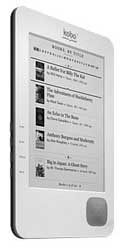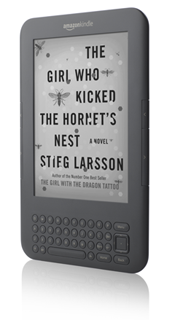Back in 2006, before the world knew what a Kindle was, Sony released the first modern e-reader with a power-efficient, glare-free E-Ink screen. It’s upgraded them and added new models ever since–and it’s announcing improved versions of all its models today, a week after Amazon started shipping its newest Kindle. The company gave me a sneak peek last week.
As before, Sony is the only major e-reader maker that offers devices in three sizes: the 7″ Daily Edition, the 6″ Touch Edition (with a screen the same size as the one on the standard Kindle and on the Nook), and the 5″ Pocket Edition. Last year’s Touch and Daily Editions had touch-screen interfaces that worked with a fingertip (for general navigation) or a stylus (for note-taking and other precision work). The big news is that the whole line now sports touch, including the Pocket Edition–and Sony has come up with a way to implement technology without adding a layer to the screen. (Last year’s touch Sonys had murkier screens than the non-touch competition.)
In my brief hands-on time with the readers, the displays looked good. (I wasn’t able to compare them side-by-side with other e-readers, but they were noticeably more legible than last year’s Sonys.) The touch input worked reasonably well, too. But flipping pages didn’t have quite the effortless feel of e-reading apps on an iPad, an iPhone, or an Android phone, and I think the Kindle’s less fancy input system–physical buttons and a keyboard–works at least as well for the basics of exploring books.



 Amazon has announced that it’s started shipping its
Amazon has announced that it’s started shipping its  I kind of figured I was going to type these words sooner or later:
I kind of figured I was going to type these words sooner or later:  Amazon.com’s
Amazon.com’s 